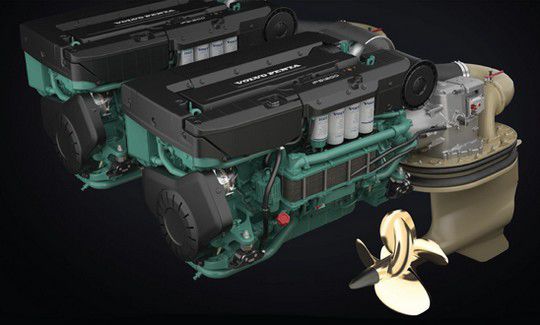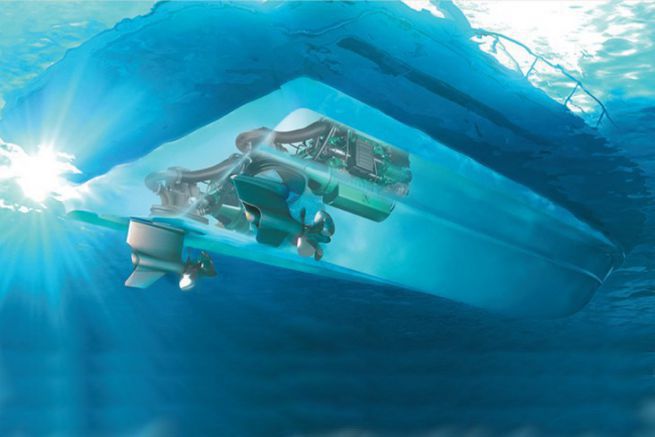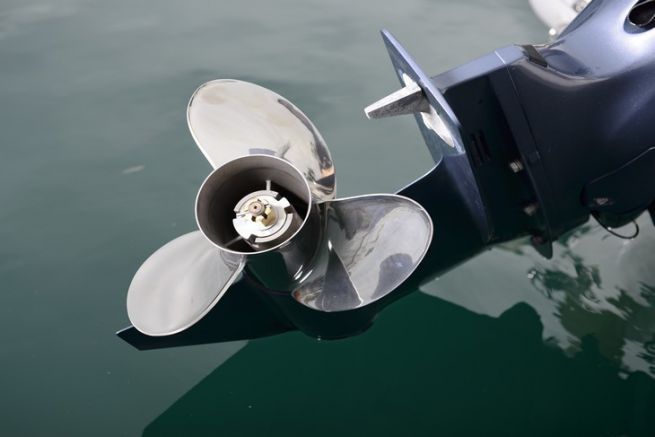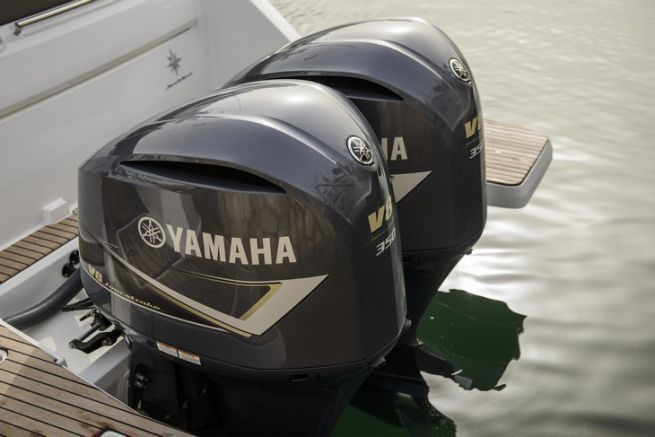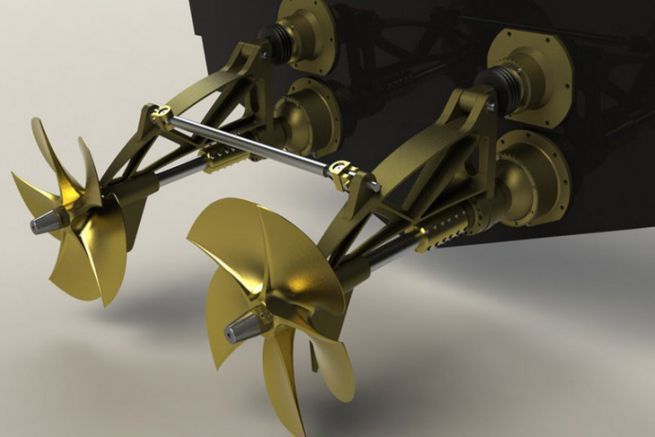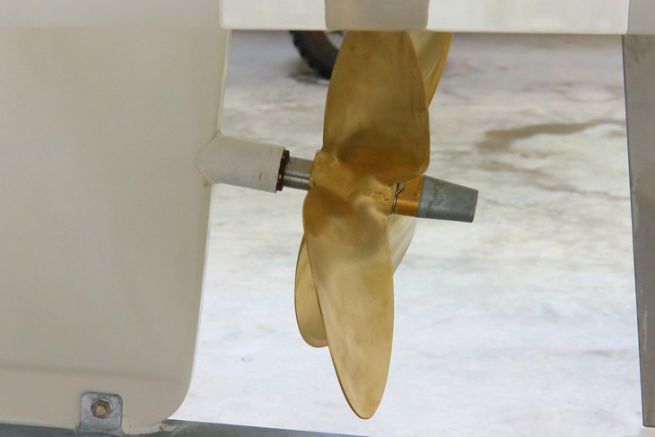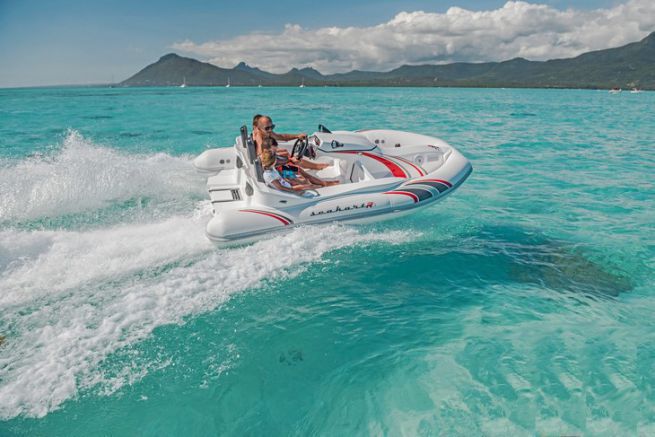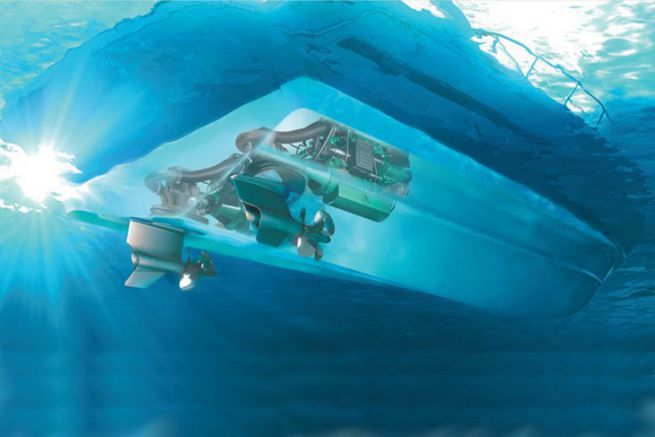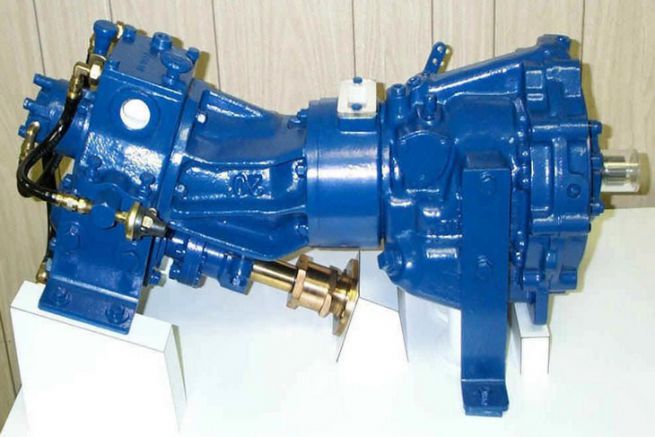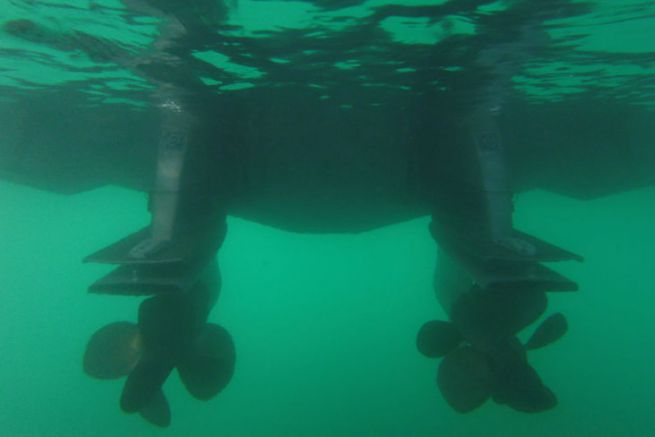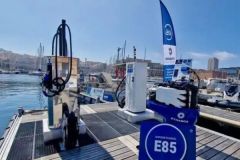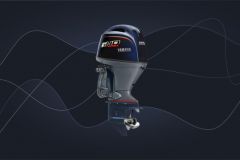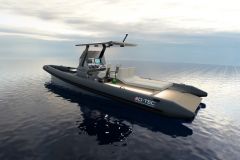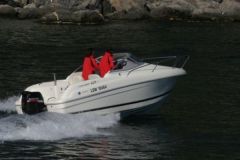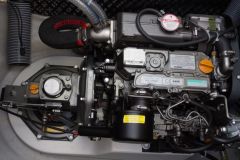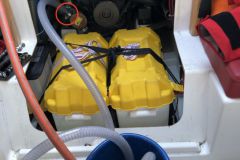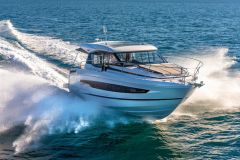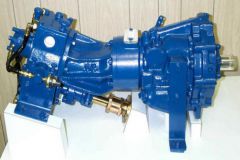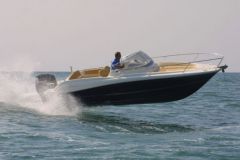Presentation of IPS propulsion
Volvo Penta's Inboard Performance System (IPS) pod system is a propulsion system designed as an alternative to conventional inboard shaft lines. It consists of a pod-type base with double propellers, which operate counter-rotating, facing forward for pushing parallel to the hull. The forward orientation of the propellers makes them towing and non-propelling.
Installed far aft of the boat, in wells integrated into the hull structure, they offer a push in any direction (the bases can rotate 360° on themselves)
Cummins has also developed its own propulsion system, the Zeus, which uses the same pod principle. Except that here, the propellers are oriented backwards and therefore propulsive (like traditional propellers).
But what makes the IPS or Zeus propulsion so interesting is the joystick! This small joystick makes docking and piloting manoeuvres (crab movement, trim adjustment, etc.) child's play.
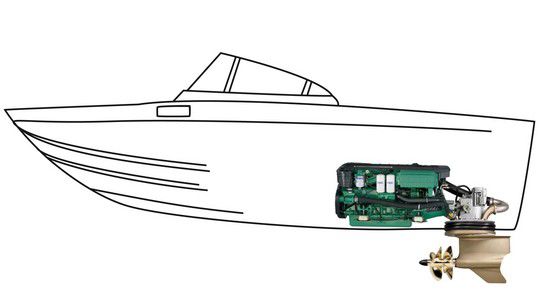
The uses of the IPS
Pod propulsion is suitable for large engine powers up to 2x7800 HP. It is found on twin engines but also sometimes with 3 or 4 cast motors. This type of propulsion can therefore be used for boats from 30 feet to yachts over 100 feet.
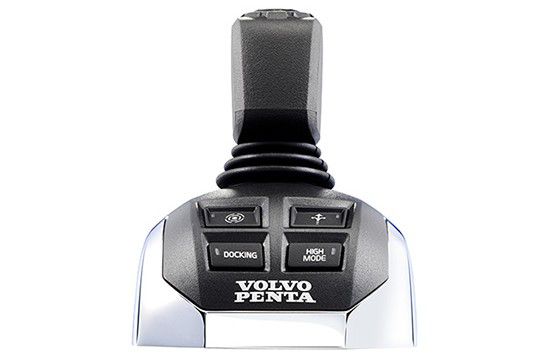
The advantages of the pod
- Manageability
- Performance (higher top speed, fuel consumption, acceleration)
- Cleanliness (significant reduction in CO2 emissions)
- Saving space on board
- Low noise and vibration level
- Reduced fuel consumption
The disadvantages of the pod
- Recommended retail price including VAT 2019 :
- Fragility of propellers and subbases
- Technicality and on-board electronics
